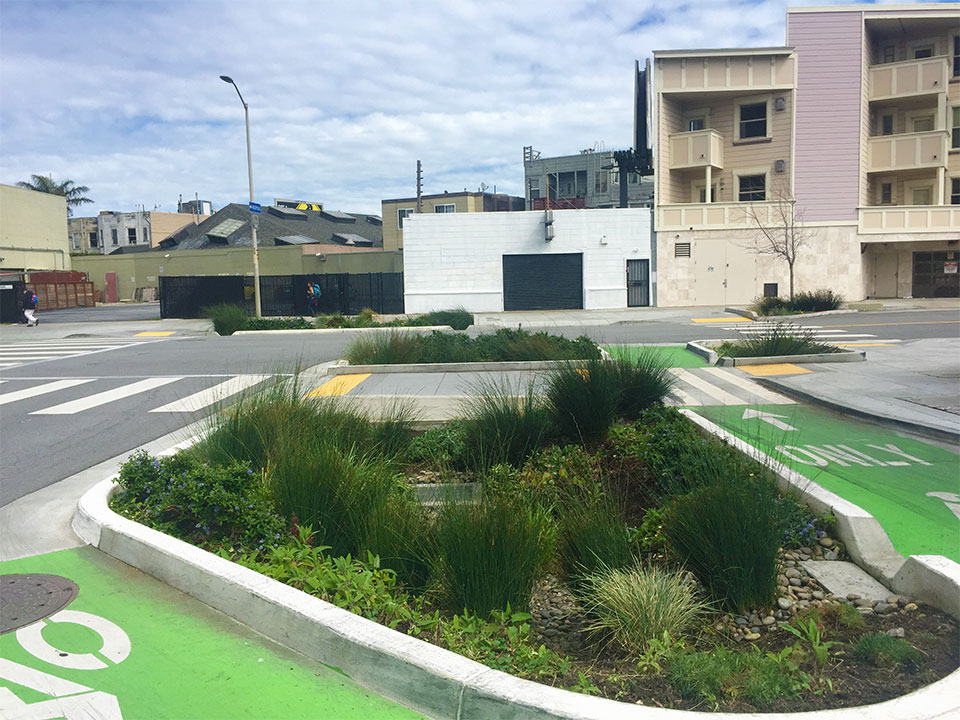What is Green Infrastructure?

Green infrastructure is an approach to water management that protects, restores, or mimics the natural water cycle. In the Bay Area this means managing storm water runoff, a major cause of water pollution in urban areas.
Storm Water Runoff
Polluted stormwater runoff is a leading cause of water quality degradation and impaired waters in urban areas.
Storm water runoff is a major cause of water pollution in urban areas. When rain falls on our roofs, streets, and parking lots in cities and their suburbs, the water is unable to soak into the ground as it should. Storm water drains through gutters, storm sewers, and other engineered collection systems and is discharged into nearby water bodies. The storm water runoff carries trash, bacteria, heavy metals, and other pollutants from the urban landscape. Higher flows resulting from heavy rains also can cause erosion and flooding in urban streams, damaging habitat, property, and infrastructure.
PHOTOS (left to right): Landtech Consultants, University of California, Korotkin Associates, Northwest Biosolids, The Watershed Project, Saxon Holt
Green Infrastructure
Green infrastructure uses vegetation, soils, and other elements and practices to restore some of the natural processes required to manage water and create healthier urban environments. At the city or county scale, green infrastructure is a patchwork of natural areas that provides habitat, flood protection, cleaner air, and cleaner water. At the neighborhood or site scale, storm water management systems that mimic nature soak up and store water.
Green infrastructure reduces and treats storm water at its source while delivering environmental, social, and economic benefits. —EPA
Environmental Benefits
- Increase carbon sequestration
- Improve air quality
- Additional recreational space
- Efficient land use
- Improve human health
- Flood protection
- Drinking water source protection
- Replenish groundwater
- Improve watershed health
- Protect or restore wildlife habitat
- Reduce sewer overflow events
- Restore impaired waters
Economic Benefits
- Maintain aging infrastructure
- Increase land values
- Encourage economic development
- Reduce energy consumption and costs
Social Benefits
- Establish urban greenways
- Provide pedestrian and bicycle access
- Create attractive streetscapes and rooftops that enhance livability and urban green space
- Educate the public about their role in stormwater management
- Urban heat island mitigation
Korotkin Associates manages and maintains Bioswale/Rain Garden green infrastructure planters. One of our clients installing many of these features is the San Francisco Public Utilities Commission. Municipalities and public spaces are increasingly incorporating these specific elements into renovation projects and new designs.
References
EPA website epa.gov
EPA “Green Infrastructure Case Studies”






